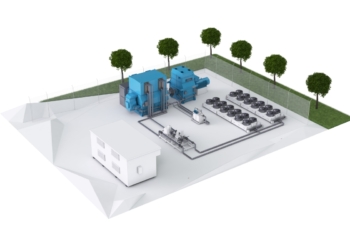L2Tek launches Gigalight silicon photonics transceivers
Author: Joe Peck

L2Tek, a technical distributor of components for broadcast, professional video, and high-speed data networks, has announced the immediate availability of Gigalight’s silicon photonics (SiPh) transceiver portfolio for customers across the UK and Europe. The new offering includes 100G, 400G, and 800G QSFP modules engineered to meet the bandwidth and density requirements of AI workloads in hyperscale data centres and edge computing.
Silicon photonics technology enables the integration of optical and electronic components on a single chip, offering a compact footprint, reduced power consumption, and support for high data rates. Gigalight’s SiPh-based transceivers are designed for short-to-medium reach applications and leverage PAM4 modulation.
“Gigalight’s silicon photonics portfolio now available exclusively through L2Tek to UK and European customers, delivers the bandwidth, density, and energy efficiency needed for AI data centres. These transceivers use advanced modulation and chip-level integration to meet the demands of modern interconnects while offering a compelling alternative to traditional solutions,” claims Mark Scott-South, Director, L2Tek.
The 100G DR1 transceiver, available in QSFP28 format, supports up to 500 metres over a single 1310nm wavelength. The 400G DR4 model, housed in a QSFP-DD form factor, delivers four 100G lanes over a 500-metre link, making it suitable for high-density leaf-spine and AI cluster deployments.
New to the lineup is Gigalight’s 800G DR8 transceiver, based on a new silicon photonics platform and available in OSFP format. It supports eight lanes of 100G PAM4 and is engineered, the company says, for performance across a range of data centre conditions. The transceiver is compliant with IEEE 802.3 standards and would be suited to high-performance computing, cloud infrastructure, and data centre interconnects.
Compared to traditional transmitter technologies such as distributed modulated lasers (DMLs) and externally modulated lasers (EMLs), silicon photonics could offer cost-effective scalability at volume, while maintaining the bandwidth and integration benefits required by next-generation network infrastructure. While EMLs continue to serve long-haul and regional network requirements, SiPh modules are emerging as a strong alternative for AI/GPU clusters and cloud computing environments.
For more from L2Tek, click here.








